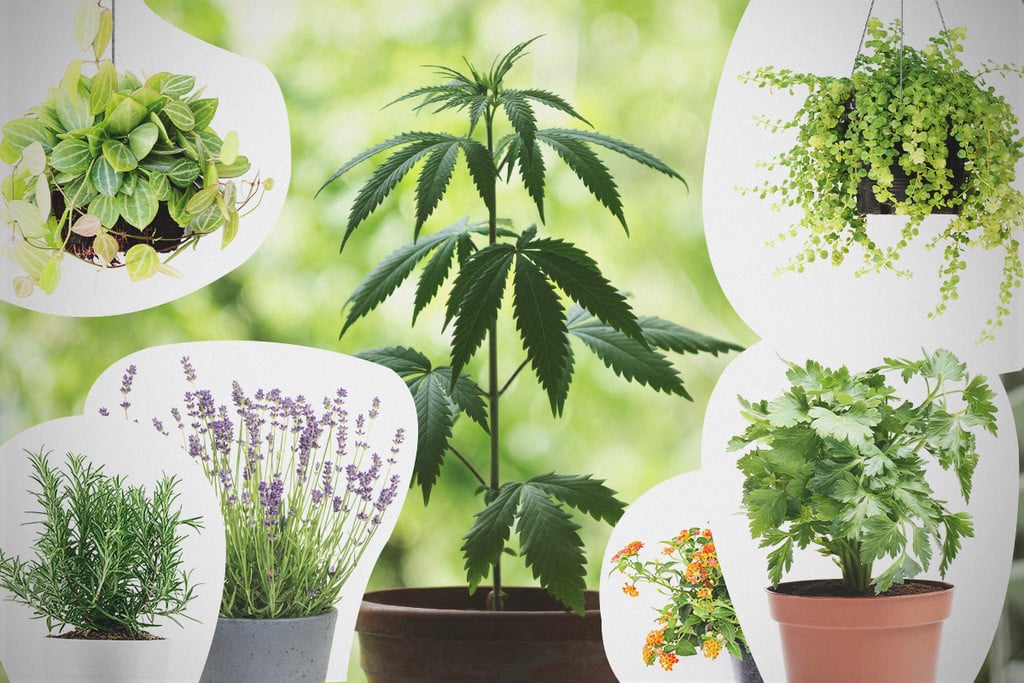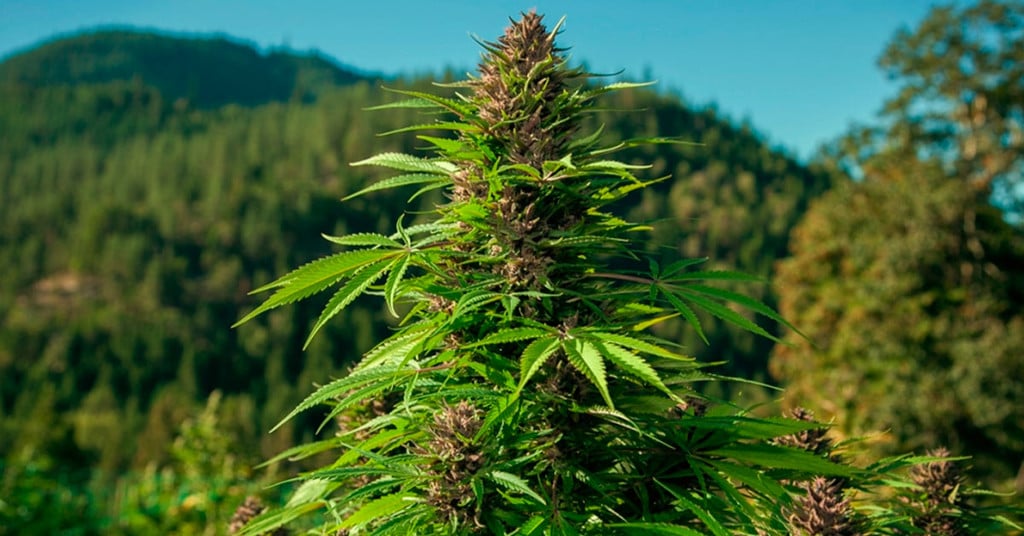.

Plants That Look Similar to Cannabis
You might be surprised at how many plants look like cannabis. Sure, any experienced grower can tell them apart, but these species can serve as effective living camouflage against those with untrained eyes. Find out more about nine plants that look like marijuana, and their own unique traits.
Cannabis exists as a unique species within the plant kingdom. No other plant produces such an abundance of cannabinoids, and you’d be hard-pressed to find another species that smells quite as distinct. Furthermore, very few plants have had such a significant impact on human culture throughout history, in terms of use as an industrial crop, and for holistic and recreational purposes.
9 Plants That Look Like Marijuana
However, despite its many exclusive traits, cannabis does share aspects of its appearance with several other species. Cannabis definitely has a distinct look, but there are numerous plants that possess similar leaf structures or stems. The differences are obvious to the trained eye, but newcomers are more likely to be stumped. With this in mind, outdoor cannabis growers can use these plants to disguise their crop!
But before you go ahead and fill your garden with cannabis-like species, consider that these plants likely won’t cover up the smell of terpenes from your weed. Also, neighbours might mistake them for actual cannabis plants and inform the authorities. If you think plants that look like cannabis can add value to your weed garden, then you should definitely check out the list below! Furthermore, these plants are simply fun to grow on their own, especially if you want to cultivate cannabis but your situation won’t allow it.
-
Scarlet Rosemallow (Hibiscus coccineus)
If you want to add the elegance of cannabis to your garden without the overwhelming aroma and risk of getting caught, scarlet rosemallow (also known as “Texas Star” hibiscus) provides an excellent option. This hardy species belongs to the Malvaceae family and grows throughout the coastal plain of the Southeastern United States, where it thrives in swamps, marshes, and ditches. Plants grow to lofty heights of 180–240cm, much taller than small indica and autoflowering species, but are large enough to pass off as towering sativa varieties.
Scarlet rosemallow grows perennially. Although it dies back when the first frosts arrive, it bounces back to life in the spring. The species produces gorgeous five-petalled flowers that attract key pollinators such as hummingbirds, butterflies, and bees. Blossoms aside, the plant also features large (12–15cm-wide) leaves that look very cannabis-like in appearance, thanks to their long, distinct leaflets.
Despite sharing some visual characteristics with cannabis, scarlet rosemallow exhibits some key differences that make the two plants easy to tell apart for those with experience. First of all, most cannabis leaves feature 7–9 leaflets, whereas hibiscus rosemallow leaves feature 5 (3 large and 2 small). Some varieties of the species also feature very small and slender leaves that don’t share much of a resemblance to cannabis, and others possess deep red stems that are a glaring giveaway.
If this plant has a place in your garden, you need to know a couple of key growing points. Scarlet rosemallow loves wet feet (it did evolve in a marsh, after all), so you need to keep the roots moist at all times, especially during hot summers. Although the above-ground parts die back during the winter, the root system survives. Add a thick layer of mulch in the autumn to insulate the ground and retain moisture.
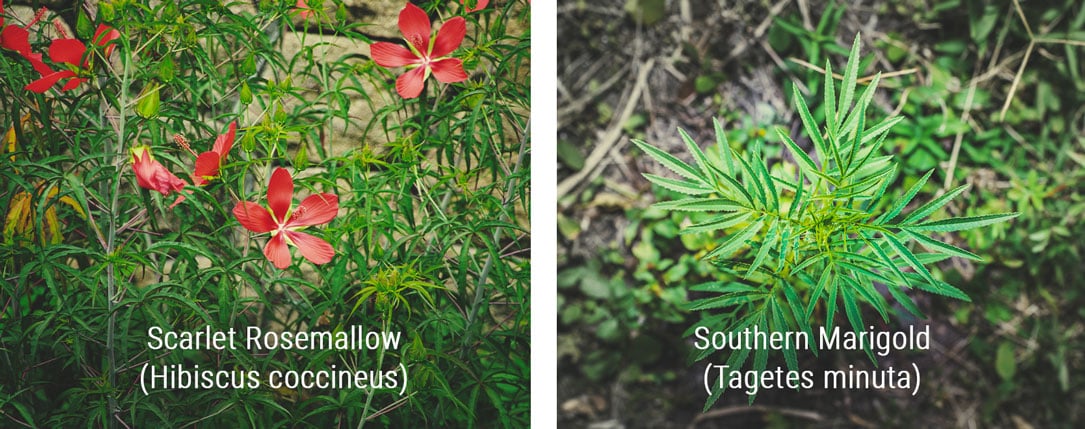
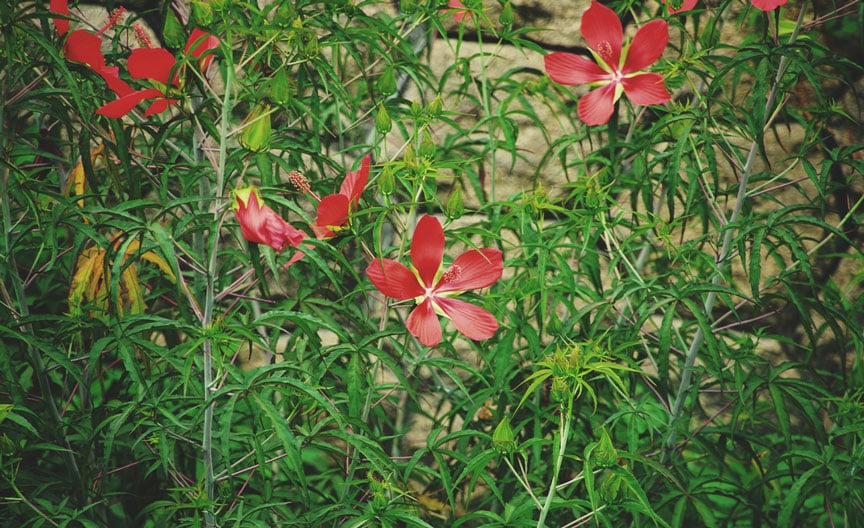
-
Southern Marigold (Tagetes minuta)
Southern marigold doesn’t look very similar to cannabis up close, but you could easily mistake this member of the Asteraceae family for a lanky sativa cultivar from a distance. Also known as wild marigold and black mint, this half-hardy annual is native to the southern half of South America. However, following the arrival of the Spanish to the region, the plant made its way all around the world, from North America and Europe to Africa.
In the Andes, the herb goes by the name Wacatay or Huacatay. Traditionally, the people in this region used southern marigold as a culinary herb, and you’ll frequently find it in local grocery shops in the form of a bottled paste. However, not everyone can tolerate this plant, and it causes rashes and photodermatitis in some consumers.
So, how exactly does it compare to cannabis? From several metres away, the long and narrow stems and pointy leaves give plants the appearance of untopped sativa varieties. However, get a little closer and you’ll come across some very obvious differences; the leaves give the game away. Whereas the leaflets on cannabis leaves all protrude from the same leaf, southern marigold leaflets are actually small individual leaves connected to the stem. This species also starts to flower in October and produces tiny white flowers—much different to the bulbous buds of cannabis plants.
If you want to grow southern marigold, sow seeds indoors as early as February, or outdoors during May. Germination takes place over the course of two weeks. Once your plants become big enough to handle, transplant them into regular garden soil and position them in an area that receives full sun.
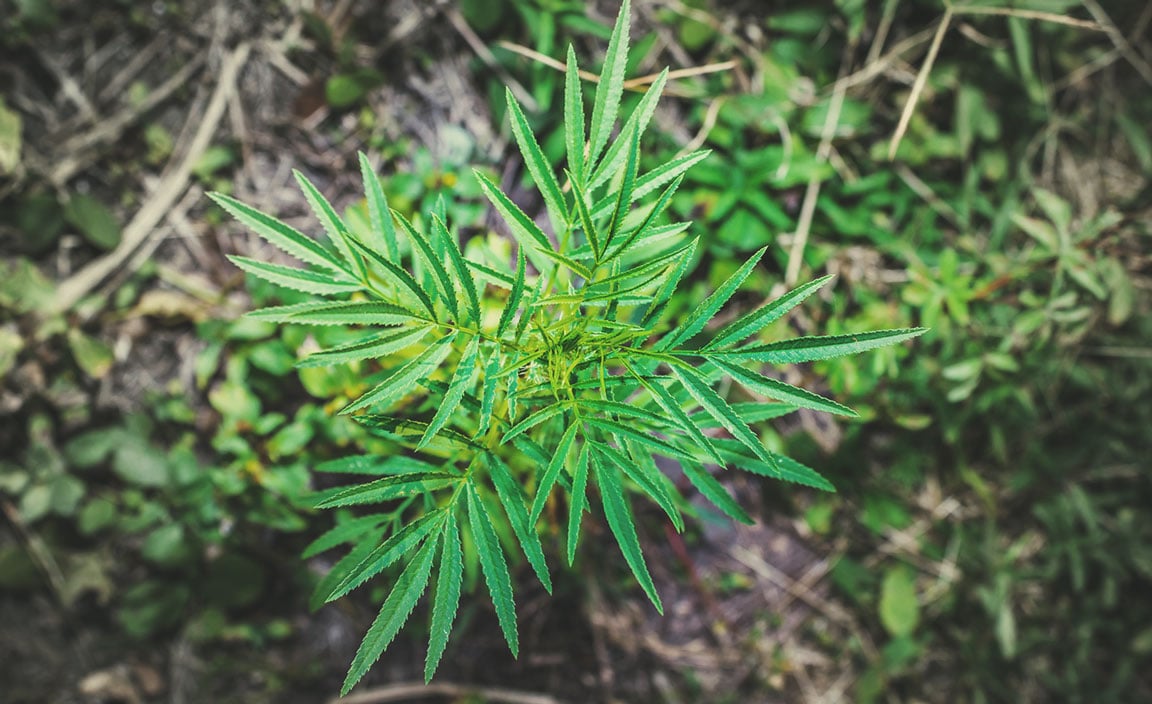
-
Kenaf (Hibiscus cannabinus)
Kenaf bears a striking resemblance to industrial hemp. Whereas cannabis strains grown for their flowers are bushy, compact, and loaded with colas, industrial hemp varieties are tall, lanky, and mostly stem. Manufacturers then use the robust fibres to create myriad materials, including paper, rope, and bioplastics.
As well as looking similar, kenaf also serves a similar purpose to hemp. Also known as Deccan hemp, this towering plant belongs to the Malvaceae family and grows to a height of 3.5m. Many countries grow kenaf for its fibres, including India, South Africa, and Thailand, and use it to make paper, clothing, insulation, animal bedding, and soilless potting mixes. Just like hemp seeds, kenaf seeds are used to make an edible oil rich in healthy omega-3 and omega-6 fatty acids.
Kenaf and hemp share multiple morphological similarities. For one, they both feature tall, narrow, and woody stems. Their leaves also look similar. Kenaf leaves feature 7 distinct leaflets, though these are rounder and bulkier than those found on cannabis leaves. Kenaf plants also produce white, yellow, or purple poppy-like flowers that look nothing like hemp colas.
Kenaf might come in handy to conceal your cannabis plants; however, you’ll need a decent amount of space, and you’ll have to position your weed plants to the south of your kenaf specimens to prevent the latter from shading out the former. Kenaf grows best in sandy and well-draining soil. If you’re dealing with clay out in the garden, either supplement it with perlite or build raised beds and fill them with a loose growing medium. Water your plants generously throughout the growing season, and apply a thick layer of mulch to keep the soil fed with plenty of organic matter.
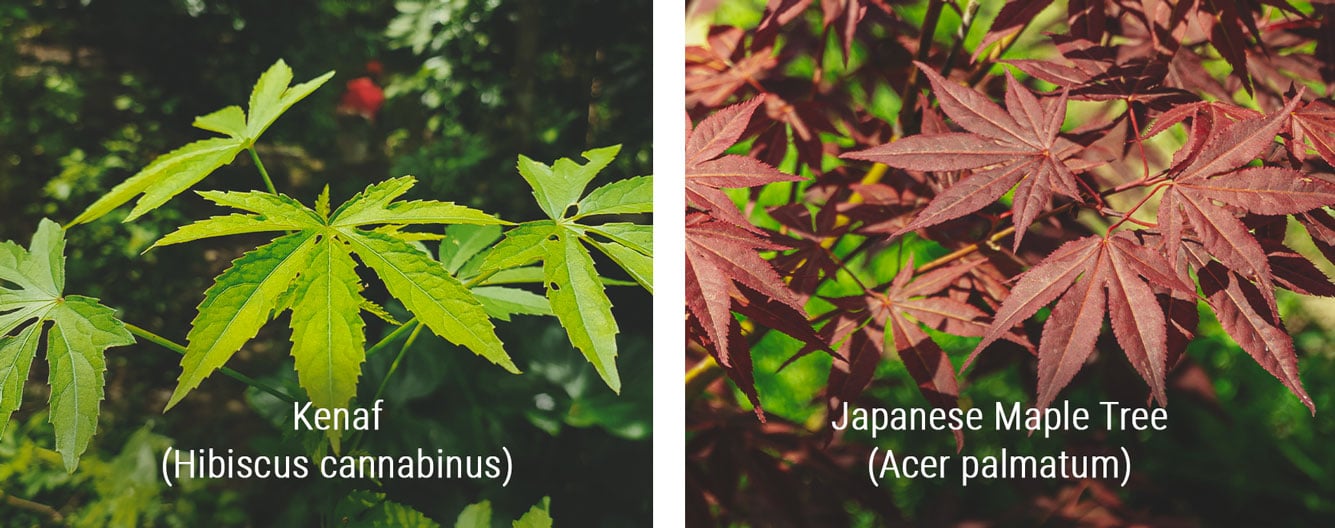
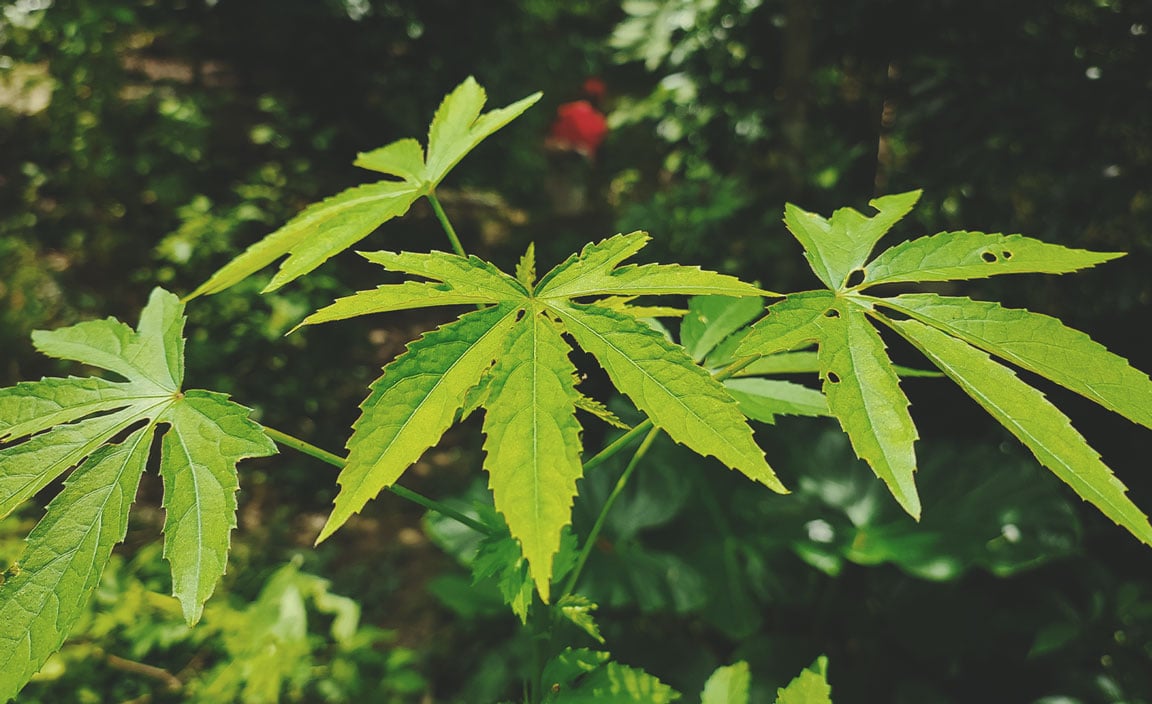
-
Japanese Maple Tree (Acer palmatum)
You’ve probably come across the Japanese maple tree in your local neighbourhood. People often put this plant on display in their front garden, and many gardeners create beautiful bonsai-like trees using pruning techniques. If you have seen this tree locally, chances are you had to look twice or rub your eyes to confirm you didn’t just stumble across a cannabis plant.
This tree species originated in Japan, Korea, China, eastern Mongolia, and southeast Russia. After domesticating it, humans developed a long list of different cultivars with varying leaf shapes and colours. Most of these varieties grow to 6–10m in height and 5–10m in width when mature. Depending on the variety, the leaves either appear dark green or dark red. However, the shape almost always looks like cannabis; 7 thin leaflets make them look almost identical.
Yet, this species develops a thick, woody stem that makes it distinct from your cannabis crop. However, if you grow several plants in small containers, they’ll maintain relatively thin stems that can help to disguise your prized plants. If you’re planning on growing Japanese maple, aim to raise your trees in a sunny and wind-protected spot. Because this tree evolved in mountainous regions, it thrives in loose and well-draining soil with an acidic to neutral pH of between 4.5–7.

-
Coralbush (Jatropha multifida)
Jatropha multifida—what a binomial! This gorgeous plant looks just as exotic as it sounds. A member of the Euphorbiaceae family, the species originated in Mexico and the Caribbean, but now exists in gardens all over the world, from Africa to Southeast Asia. Once you lay eyes on this plant, it makes sense how it travelled so far.
Although classed as a tree, coralbush doesn’t grow very big. Its expansive fan leaves are just like those produced by classic indica cultivars; the presence of 9 leaflets helps to sell the masquerade. If you grow this plant in an average-sized container, it also takes on the height and width of a bushy indica variety, serving as a perfect option to disguise your favourite stoning strains. While this plant maintains a striking cannabis-like appearance during the vegetative stage, this quickly changes as it starts to flower. Upon blooming, it sends out bright red bouquets that protrude from the leafy canopy below, setting it apart from any nearby weed plants.
As a tropical species, you’ll need to live fairly close to the equator (USDA zones 10–20) to grow this species. These plants need fertile soil that drains quickly, and perform best under full sun. Although coralbush resists most pests with ease, it does autumn prey to aphids.
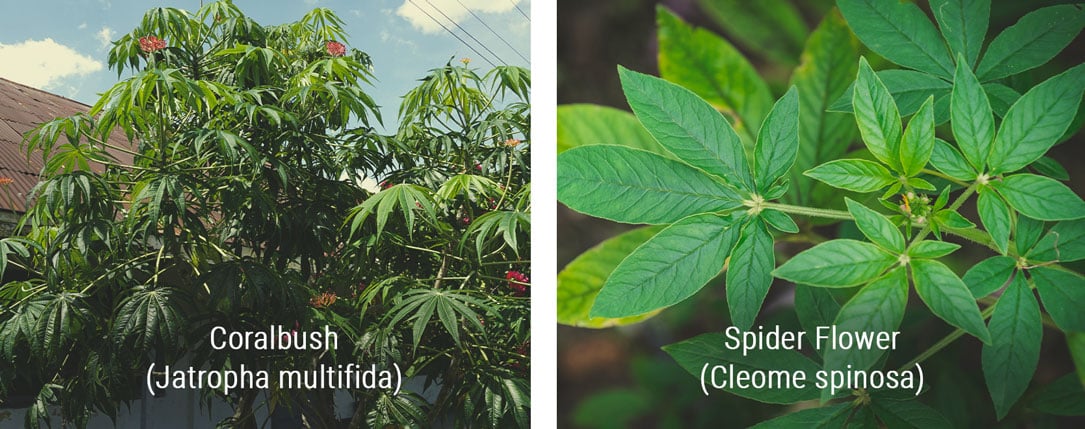
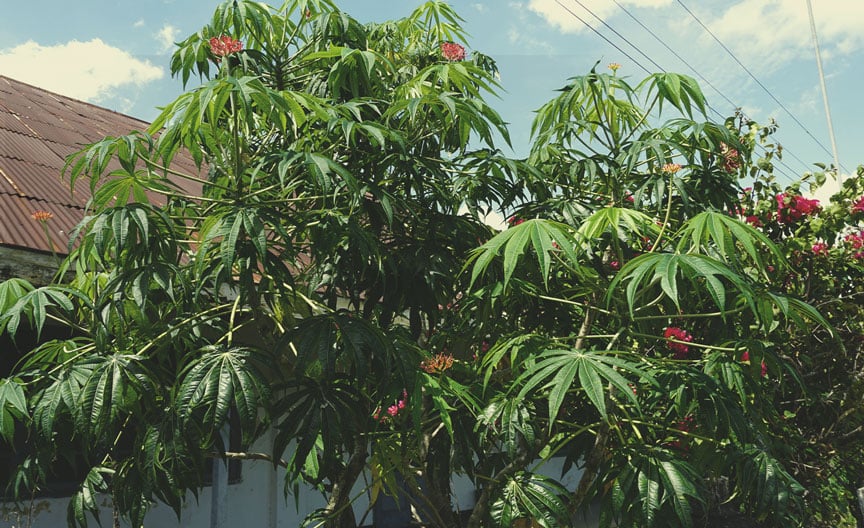
-
Spider Flower (Cleome spinosa)
Whether you want to camouflage your weed plants or simply add some beauty to your garden, you can’t go wrong with spider flower. During the early vegetative stage, this plant couldn’t look more like cannabis. It features 7 leaflets, a dark green colour, and slender branches. If you time things right, you can easily blend in a few cannabis plants for maximum discretion. To truly tell these plants apart, you need to get up close and personal with the leaflets. The giveaway? Cannabis leaves have serrated edges, whereas spider flower leaflets are smooth and rounded.
Granted, spider flower slowly turns into an entirely different-looking plant as it moves from the vegetative stage into flowering. It develops a large, thick main stem with the occasional protruding leaf, but it lacks the density of the average cannabis canopy. It also blooms gorgeous pink-red, purple, or white flowers on the tip of the plant.
This annual species reaches a maximum height of 1.5m and spreads no more than 50cm horizontally. Plants need well-draining soil and a south-facing or west-facing position. However, they don’t make a fuss over pH and will happily grow in acidic, alkaline, or neutral soil.
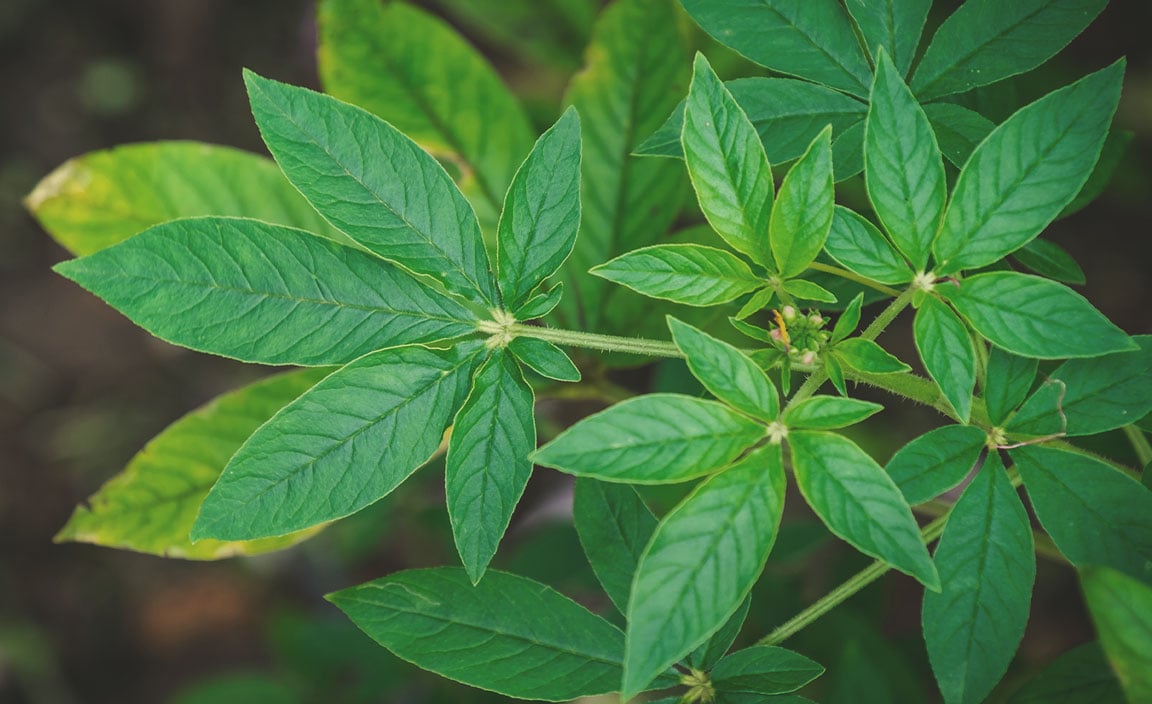
-
Cassava (Manihot esculenta)
If you’re more than familiar with cannabis, you might call this comparison a stretch. However, to the inexperienced, cassava leaves do look a lot like that famous leaf they see on TV and in newspapers. This woody shrub also belongs to the Euphorbiaceae family (along with coralbush) and stems from its native range in South America. Much like other plants on this list, cassava features 7 leaflets, but its strong white veins and waxy appearance make it easier to distinguish from cannabis than some of the others.
Sure, cassava can help to disguise small to medium-sized cannabis plants, but the true magic of this plant lies in the roots. Although a perennial species, many farmers elect to grow cassava as an annual and harvest its large tubers at the end of the season. These underground parts are loaded with carbohydrates and not dissimilar to potatoes when cooked. However, you’ll need to live in a tropical climate to experience the bounty this crop has to offer.
Cassava plants offer the best returns when grown under full sun in well-draining soil. During the start of the season, throw down a thick layer of organic matter as a mulch to feed the soil around these hungry plants as they grow.

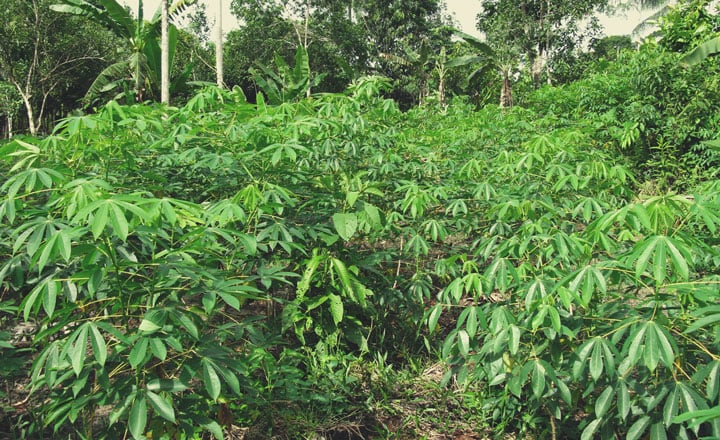
-
Chinese Chaste Tree (Vitex negundo)
Talk about looking similar! This member of the Lamiaceae family could very well steal the show with its similarity to cannabis. Again, the likeness lies in the leaves. This small tree features only 5 leaflets per leaf, but each possesses serrated edges that make them almost indistinguishable from those of the cannabis plant. This species grows to anywhere between 2–8m in height depending on its environment, and is native to a long list of countries including Afghanistan, Bangladesh, Bhutan, China, and India.
Can you grow Chinese chaste trees in your garden? Sure, as long as you live in zones 6 through 9. To reach their full potential, your trees need a sheltered spot away from harsh winds. Apart from using young trees as a discreet backdrop to your weed plants, it’s worth noting that the roots, fruits, flowers, and leaves of the tree have a history of holistic use in Southeast Asia.
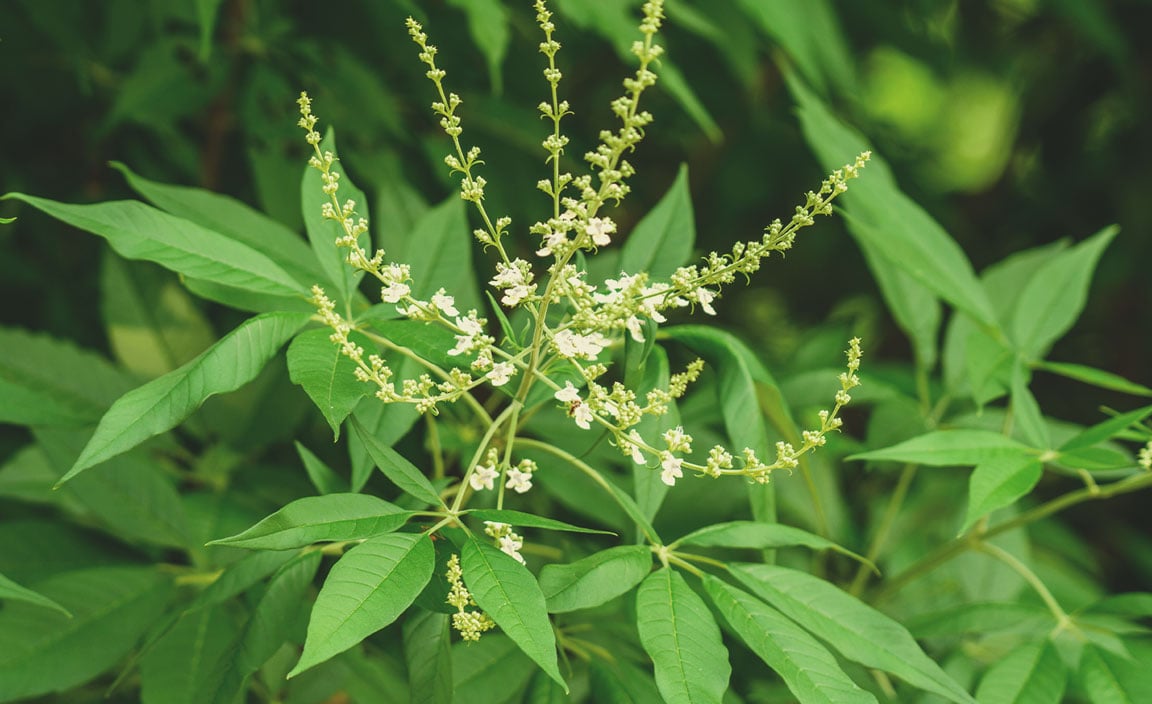
-
Japanese Hop (Humulus japonicus)
Not only does Japanese hop look like cannabis, but the two are actually related; both species come from the Cannabacease family, along with common hops, hackberries, and other species. Although its name suggests otherwise, this plant is also native to China, Korea, and Vietnam. After making its way to North America, it became prolific and labelled as an invasive species.
Japanese hops produce leaves that look quite similar to those of the cannabis plant. Despite the presence of 7 leaflets and serrated edges, the leaflets themselves are much broader than those of cannabis. The plant also possesses a much different growing pattern to cannabis. As opposed to developing a standalone main stem, it sprawls out as a climbing vine and dominates trellises and nearby plants.
Much like cannabis, this species also produces flowers with trichomes that churn out lovely aromatic terpenes. If you want to grow Japanese hops, prepare to watch it surge to a length of 10m in a single growing season. Done properly, you can weave a trellis of Japanese hops in between your cannabis plants to create a living barrier. But grow them in containers to prevent the rhizomes from taking over your garden. To thrive, they need 6–8 hours of direct sunlight per day and rich soil with good drainage.
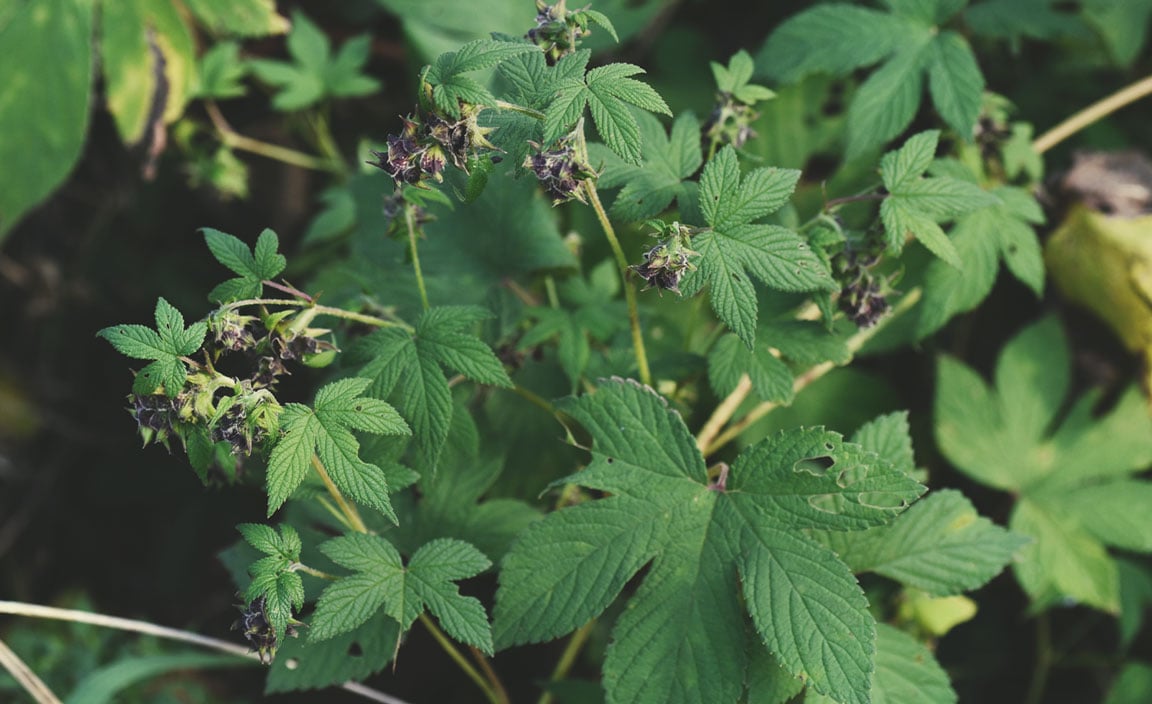
Disguise Your Cannabis With These Plants
There you have it. Quite a few plant species share visual characteristics with cannabis, and you can use these bushes, shrubs, and trees to camouflage your weed plants to the best of your ability. You can easily grow your favourite small–medium-sized strains alongside a young Japanese maple tree or coralbush, and healthy, tall kenaf plants could even help to cover up large sativa specimens. Just remember, you’ll still have to contend with the smell!




























